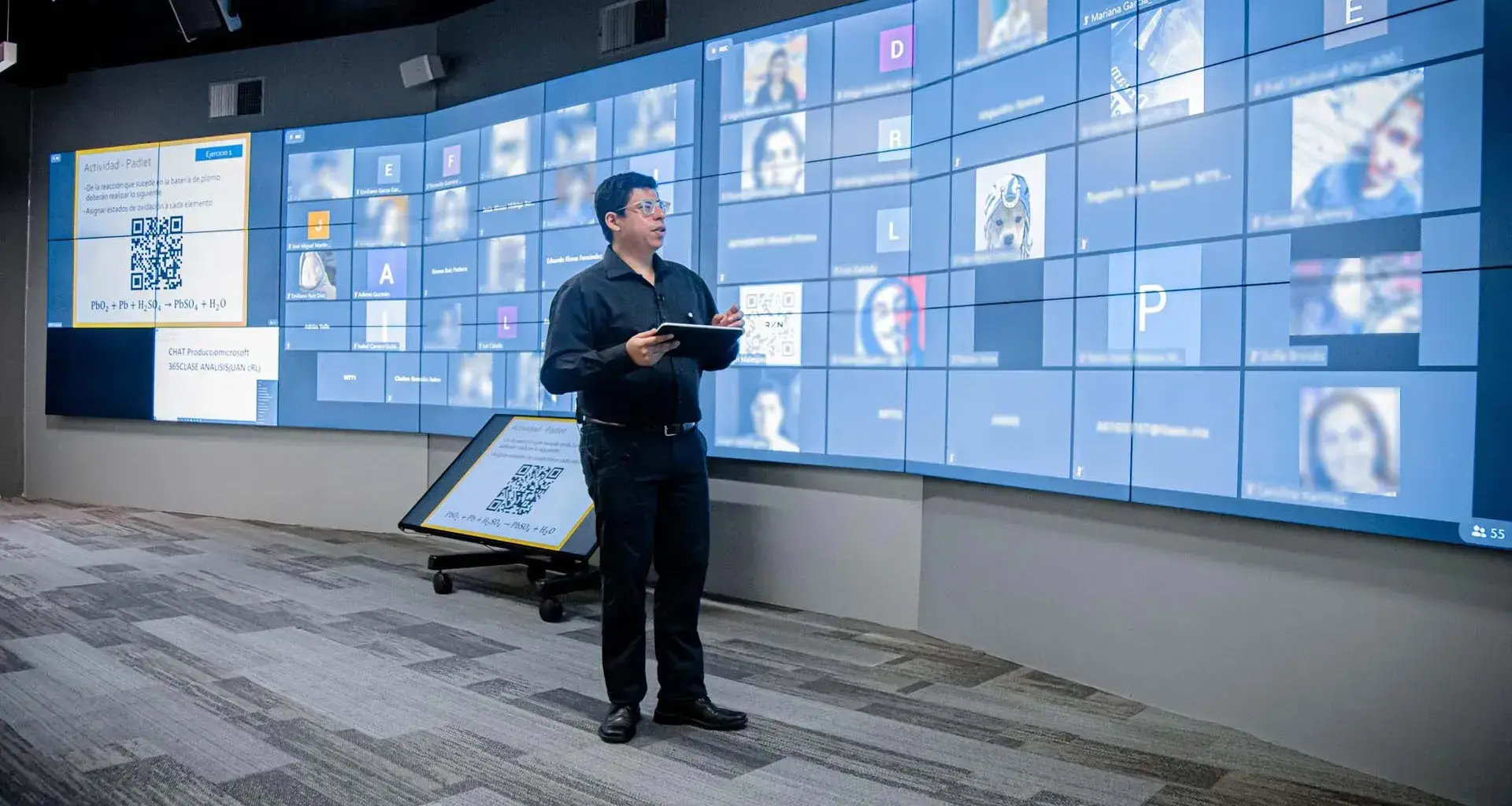Tec de Monterrey has already begun to give classes in its first immersive technology classrooms, called Hall Immersive Rooms, in addition to the hybrid classrooms it has already begun to operate on several campuses.
This immersive classroom -designed for the delivery and transmission of virtual courses- integrates video, communications, and artificial intelligence technologies to break down the barriers of distance and improve the relationship between students and teachers.
The Tec switched over to distance learning completely during the COVID-19 pandemic and later designed the HyFlex+ Tec hybrid model (part remote and part on-site), which it will continue to use for summer classes and in the new semester.
Patricia Aldape, the Tec’s Director of Learning Experience Innovation, told CONECTA: “It’s a new learning space designed to optimize remote experiences and benefit the interaction between students and teachers.”
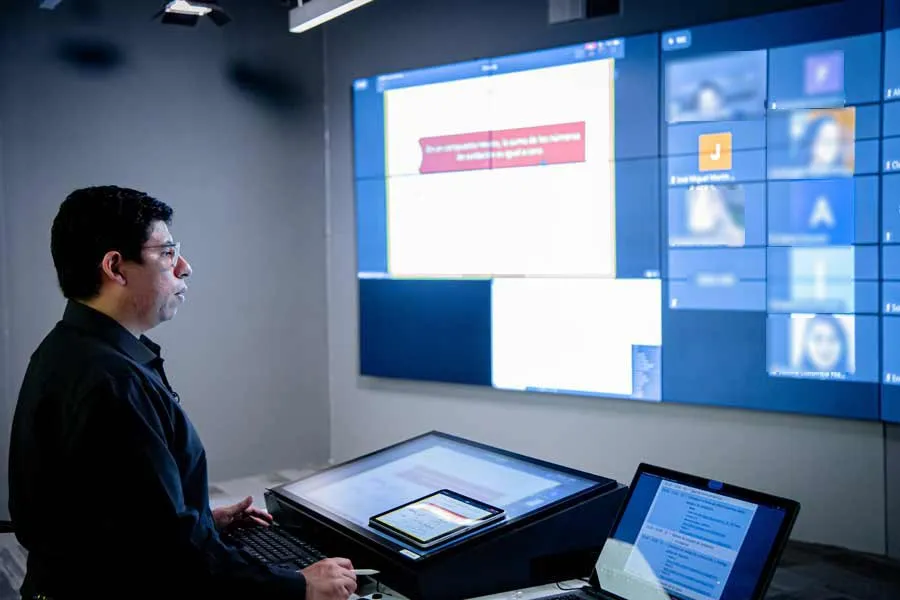
Beyond a normal Zoom call: life-size “face-to-face” immersion
In this room, teachers can give their classes, move around the space while being followed by one of the cameras, and see life-size faces of up to 150 students.
“When teachers can see their students at normal scale, it flips a switch in their brain, creating what scientists call a ‘flow state’ when interacting with students in real-time, which helps them feel immersed in the experience.
“Teachers can not only see their students at normal scale, but they also have a touchscreen that works like an electronic whiteboard, where they can write down exercises for the students,” adds Aldape.
Cinthia Smith, who teaches the elite Citizenship and Technology course at the School of Government and Social Sciences, was one of the professors who participated in the pilot program for this technology.
“It’s a way to get back to teaching as it was before the pandemic. (My students) tell me it’s like watching me on a TV show,” the teacher says.
“(My students) tell me it’s like watching me on a TV show.”
On May 20, Smith and Professor Karina Onofre were the first to use the Hall Immersive Room at the Monterrey campus for a class of 53 students from 11 Tec campuses.
Since beginning in May 2021, they have trained 17 teachers, who are either using or will be using this technology to teach more than 6 digital education subjects and 11 classes at EGADE Business School.
“There’s a production team when the teacher arrives. During transmission, we use layouts where the teacher’s always on-screen. We can change angles and include videos or whatever it is that they’re explaining,” says Carla Ramírez, leader of Educational Innovation.
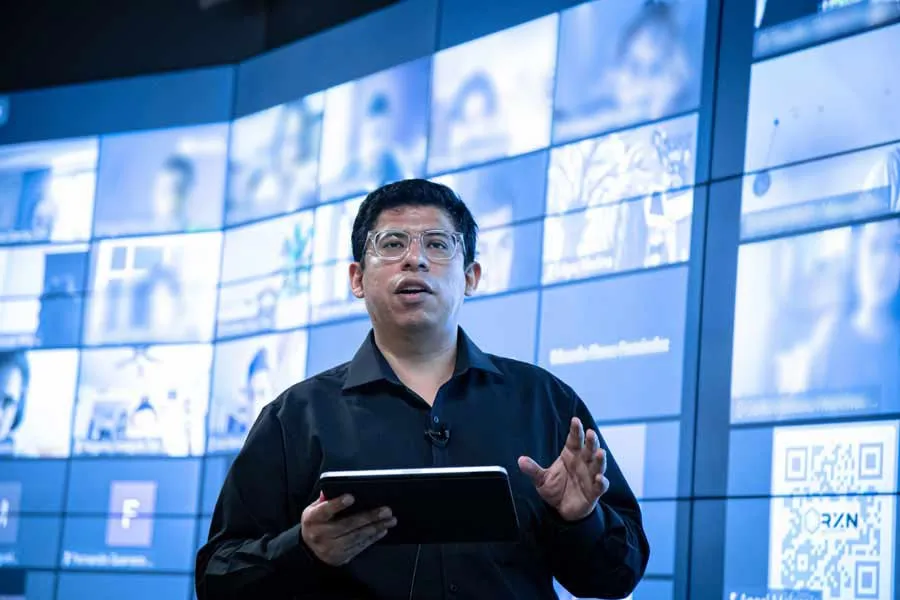
State-of-the-art technology for generating immersion
These types of rooms are used to teach virtual courses, with technology that includes video walls, communications, cameras, Hi-Fi sound, and artificial intelligence to create an immersive environment for teachers and students.
“Immersion is achieved thanks to the placement of a large number of screens in a semicircle, creating a high-definition video wall that offers a panoramic view, as well as integrating cameras, lighting, and a high-fidelity sound system,” she explains.
In addition, she points out that Tec researchers are in charge of developing and implementing artificial intelligence to recognize students’ expressions and emotions, so as to offer information to teachers that helps them adjust their teaching style in real-time.
“Immersion is achieved thanks to the placement of a large number of screens in a semicircle, creating a high-definition video wall.”
“(The classroom) is going to have a tool that senses learning-related emotions, which will be ready by December. In general, it will tell teachers if their students are focused, confused, or experiencing negative states.
“We’ll be able to give teachers a barometer for how their students are feeling at any given moment and if they understand the class or not. So, if teachers see that 80% are confused, they can change the exercise or their strategy,” the director explains.
She added that the use of artificial intelligence -applied for the first time in a project of this type- will help to further research on how students react when learning remotely.
Ramírez points out that teachers will also have the assistance of a production team in a control booth. This team will be able to communicate information to teachers through the main screen.
The first Hall Immersive Room is in the CEDES building of the Tec’s Monterrey campus and there is a plan to open similar rooms on more campuses throughout the country.
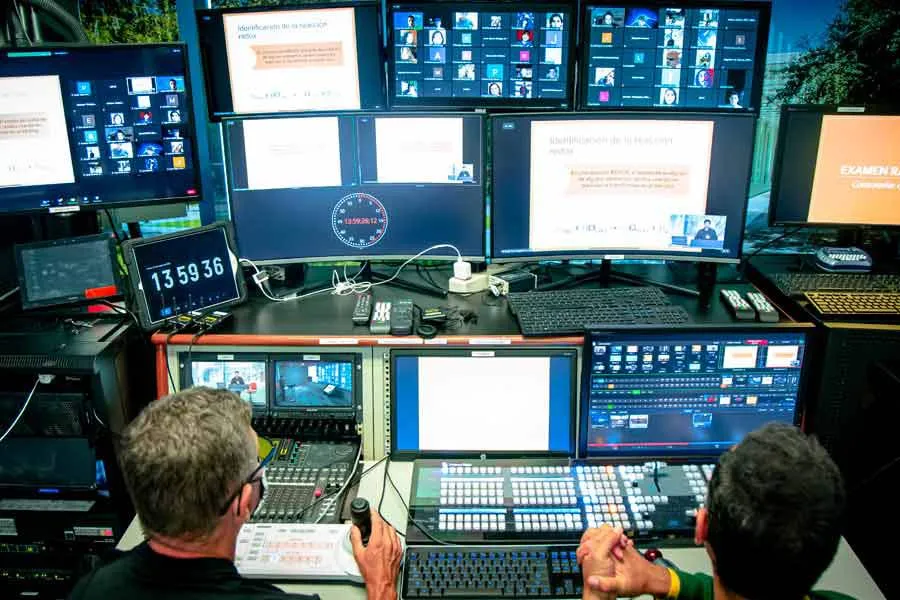
The Tec’s experience in distance learning
A year and a half ago, the Tec’s Educational Innovation Department was already developing the Hall Immersive Room, alongside other institutions such as Stanford and Harvard, to create virtual spaces with an immersive experience.
“I believe that our hallmark is the ‘expertise’ we have from more than 30 years’ experience in distance learning. As well as technology, we have very experienced teachers who were already teaching classes via satellite several years ago.
“We’ve also been evolving our entire approach to teaching. Long before the pandemic, we were making adjustments in distance learning to establish best practices in teaching techniques,” adds Ramírez.
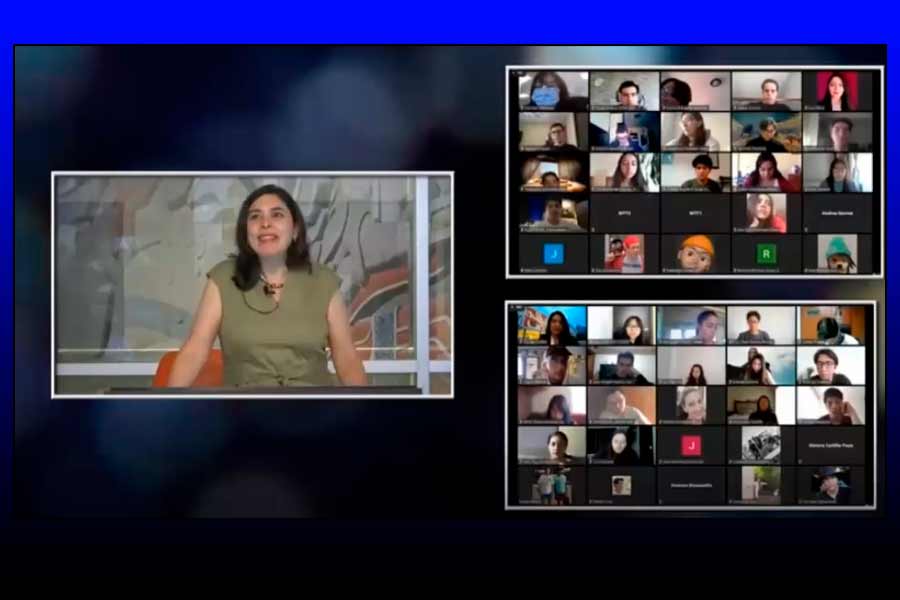
The leader believes that the immersive classroom ensures an active learning process, due to the teamwork of teachers and producers who have created minute-by-minute guidelines on what will happen in class.
“It’s not only the professor who will be talking. Students can also work in groups and complete activities with the use of technological tools such as Kahoot!, Miro, Padlet, and Menti, as well as having a producer who’s following what’s going on in the classroom,” adds Carla.
“We’re looking for ways to evolve and improve (the immersive classroom) to have better proximity and a closer relationship between students and teachers. We also want to identify factors that have a greater impact on different learning styles in remote formats,” said Aldape.
Hall Immersive Room equipment
- 27 x 55” video screens
- The screens form a semicircular video wall measuring 10.8 x 2.21 meters.
- 6 cameras
- Professional Lavalier microphones
- Lighting and Hi-Fi audio
- A space measuring 4 x 10 meters where teachers can move around
- A 32” touch screen for teachers
- A production booth with an audiovisual producer, an audio-video operator, and an interaction facilitator
READ MORE NEWS AT CONECTA:

